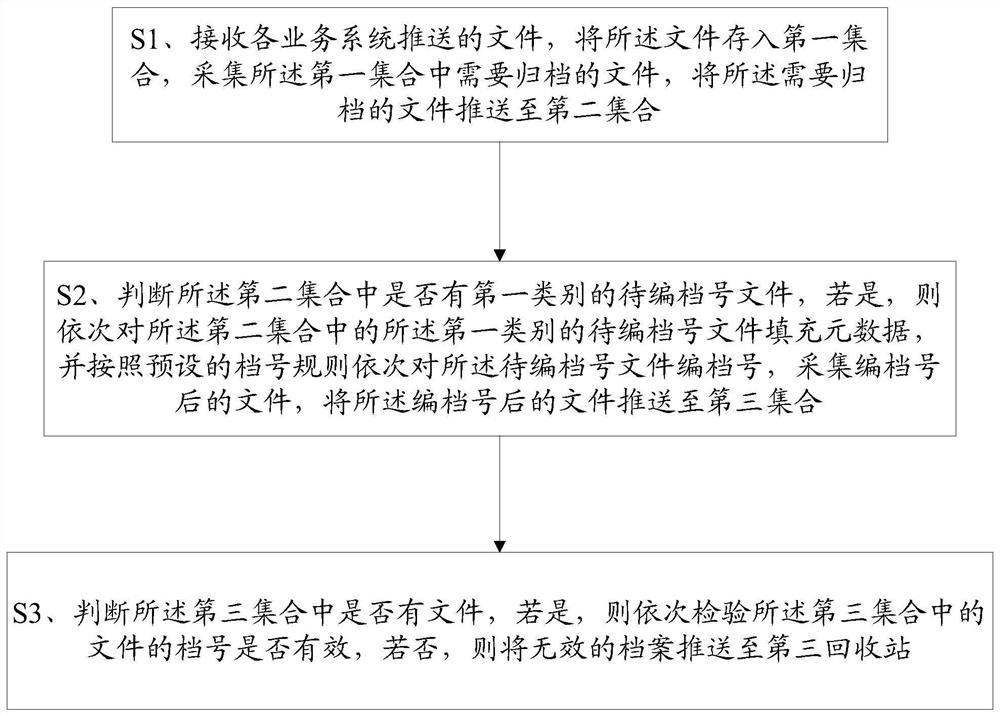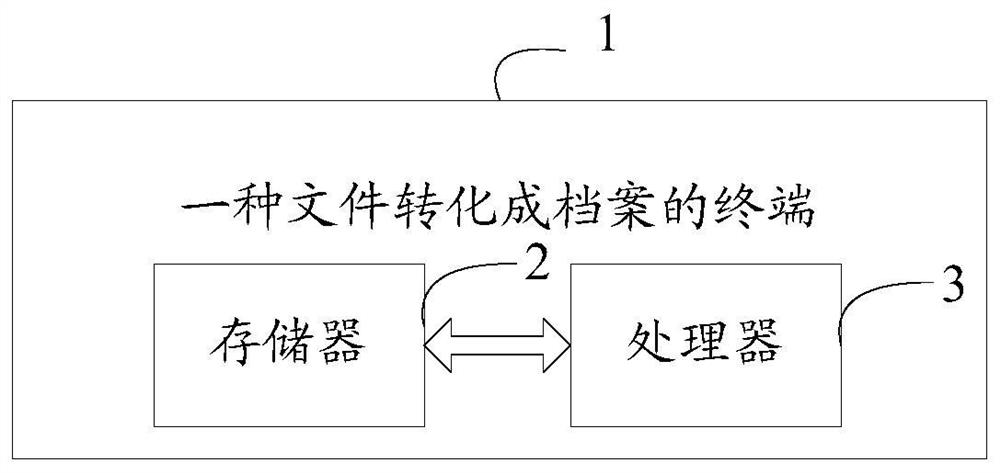Method and terminal for converting files into files
It is a technology of converting into and out of files. It is applied in the fields of instruments, computing, and electrical and digital data processing. It can solve the problems of increasing the work intensity of managers and system maintenance personnel, and the burden of system performance, so as to standardize the conversion process, facilitate sorting, and reduce costs. Effect
- Summary
- Abstract
- Description
- Claims
- Application Information
AI Technical Summary
Problems solved by technology
Method used
Image
Examples
Embodiment 1
[0060] Please refer to figure 1 , a method for converting a file into an archive, comprising the steps of:
[0061] S1. Receive the files pushed by each business system, store the files in the first collection, collect the files that need to be archived in the first collection, and push the files that need to be archived to the second collection;
[0062] Wherein, the collection of files that need to be archived in the first collection specifically includes:
[0063] Determine in turn whether the files of the first category in the first collection are valid, if not, then push the invalid files to the first recycle bin; if so, further judge whether the valid files need to be archived, if not, then Push the files that do not need to be archived to the non-archive library, and collect the remaining files of the first category in the first collection;
[0064] S2. Judging whether there are files to be numbered in the first category in the second set, and if so, fill in metadata ...
Embodiment 2
[0072] Please refer to figure 2 , a terminal 1 for converting files into archives, including a memory 2, a processor 3, and a computer program stored on the memory 2 and operable on the processor 3, and the processor 3 executes the computer program When implementing the steps in the first embodiment.
Embodiment 3
[0074] This embodiment describes the method for converting files into files of the present invention in conjunction with specific application scenarios. The process of converting files into files is divided into three stages, as image 3 As mentioned above, the first stage is the file management stage, corresponding to step S1 in the first embodiment, the second stage is the file arrangement stage, corresponding to the step S2 in the first embodiment, and the third stage is the file management stage, corresponding to the first embodiment Step S3;
[0075] File manager Xiao Chen configures the department tree according to department division, such as Figure 4 shown;
[0076] Xiao Chen currently needs to integrate 10 documents belonging to the office department in May 2017. These documents are automatically pushed from the business system and are stored in a collection named intermediate library by default, as shown in Table 1:
[0077] Table 1
[0078]
[0079] The steps...
PUM
 Login to View More
Login to View More Abstract
Description
Claims
Application Information
 Login to View More
Login to View More - R&D
- Intellectual Property
- Life Sciences
- Materials
- Tech Scout
- Unparalleled Data Quality
- Higher Quality Content
- 60% Fewer Hallucinations
Browse by: Latest US Patents, China's latest patents, Technical Efficacy Thesaurus, Application Domain, Technology Topic, Popular Technical Reports.
© 2025 PatSnap. All rights reserved.Legal|Privacy policy|Modern Slavery Act Transparency Statement|Sitemap|About US| Contact US: help@patsnap.com



